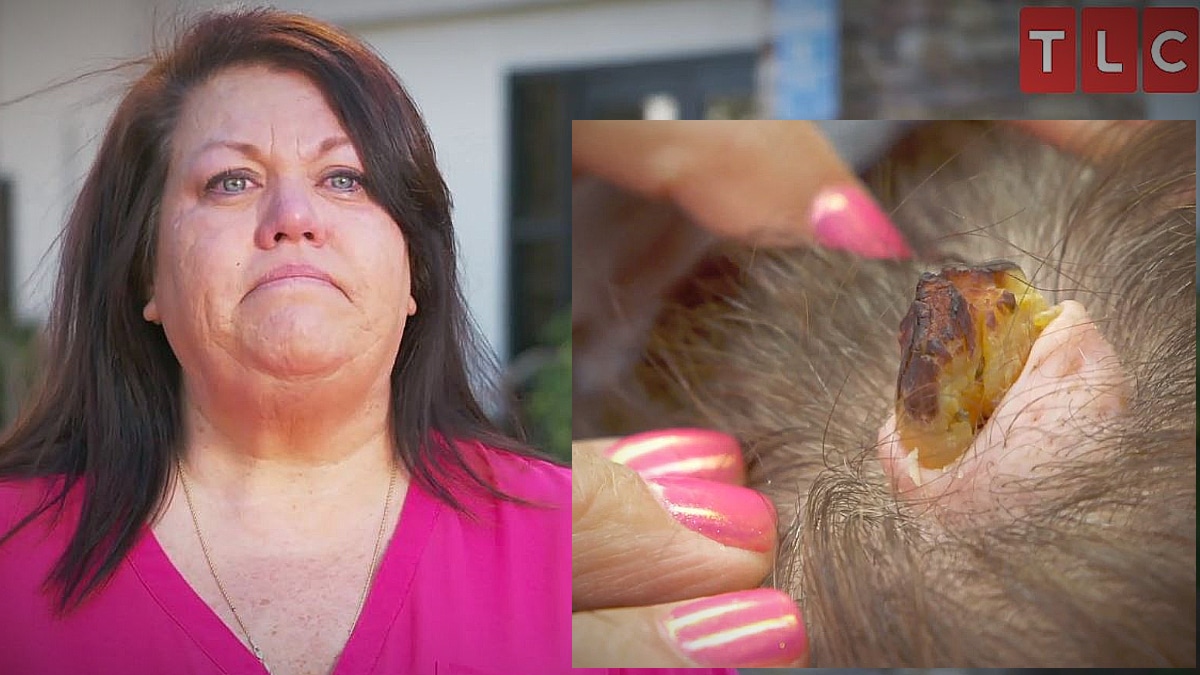
It’s time to play “what’s that bump on Rhonda’s head.”
Actually, she has more than three so it could be a case of pilar cysts run amok on this poor woman’s noggin, and it is all a big mystery for Dr. Sandra Lee aka Dr. Pimple Popper to solve.
The opening of our exclusive clip introduces us to Rhonda, who has a gorgeous mane of brown hair, all blown out and coiffed to hide her lumpy secret – at least three enormous cysts protruding from her skin which are artfully covered up with her thick hair and styling.
But this is not a cakewalk for Dr. Lee.
She is concerned after looking at them all and noting the size, especially of one huge one over Rhonda’s right ear that is hard and so large she worries that the skin margins are not going to allow her much room to sew Rhonda’s scalp back up properly. It’s not an easy pop in the park, to say the least!
What types of cysts are most common on the scalp?
There are hundreds of types of cysts. The ones Dr. Lee sees most often are epidermoid, or sebaceous or inclusion cysts, while hard nodule cysts called milia and pilar cysts are somewhat common too. Pilar cysts are also called trichilemmal cysts, which dermatologists consider to be common cysts that form from a hair follicle. They are considered to be hereditary too.
Men tend to get painful pilar cyst cousins, pilonidal cysts, on their backs and especially backsides where hair follicles get infected.
It is very possible that Rhonda suffers from pilar cysts.
As loyal viewers and fledgling dermatologists-in training already know, a common cyst is a closed sac under the skin filled with fluid and/or solid material that, when Dr. Lee extracts, is compared to various food forms like butter or mashed potatoes.
On women, they are most often found on the scalp, are mobile under the skin and smooth and filled with keratin, a protein component found in hair, nails, skin, and horns. Their contents normally are darker than the average gooey steatocystoma, cysts we were introduced to last week by Dr. Lee.
Unlike a boil, cysts typically are not painful, inflamed or caused by bacteria. However, cysts can be made to be inflamed and infected by people trying to do Dr. Pimple Popper moves without the proper training.
Most cysts on the skin are slow-growing and benign (noncancerous) but not always, and they can become problematic, depending on their size and location on your body.
What cyst Rhonda likely does not have
Most likely Rhonda is not suffering from a lipoma, a common popable issue that Dr. Lee sees in her practice. Lipomas are soft and malleable under the skin and usually always on the torso or limbs, rarely if ever does a lipoma appear on the scalp. However, lipomas can occur on the forehead.
Tune on to see how Dr. Lee addresses these large cysts on Rhonda’s head, she is worried about their overall size so it’s going to be a tricky surgery in the office:
Dr. Pimple Popper airs Thursdays at 9/8c on TLC.